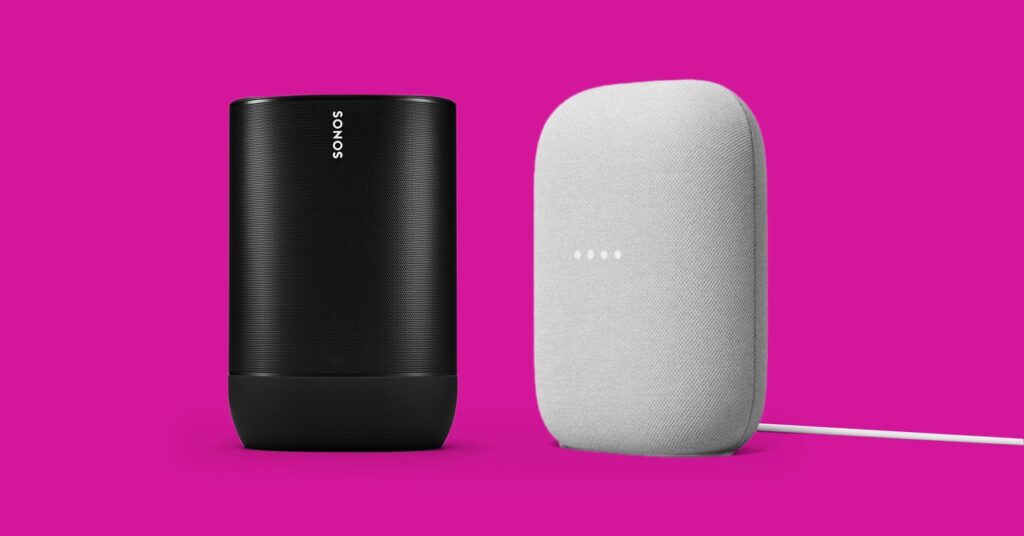How to Mix and Match Wireless Smart Speakers With Ease
Yes, you can use devices from different brands. And yes, location definitely matters….


We’re all conducting experiments all the time without knowing it. My experiment has been collecting wireless smart speakers. They are all over my house. In the humblest way possible, I now think the 16-plus wireless speakers that are connected throughout my house are too many. It’s hard to know where to put new ones anymore. As difficult as it is for any music lover to admit: Yes, I think there is a limit to how many speakers are reasonable.
But in adding so many Wi-Fi-connected smart speakers to various rooms over the years, I’ve gleaned some insights about them. Here’s a look at outfitting your home with sound and growing your wireless speaker system to fit as many as possible.
Mix and Match Speakers of All Kinds
First, it’s not necessary to buy only one brand of wireless speakers. There are definite benefits to sticking to one brand. It keeps your speakers contained within a single app, for one thing. But it’s not mandatory.
I’ve found that incorporating speakers from different brands is less problematic in practice. The key here is to work within the services and devices you use. Look at speakers that support your home’s ecosystem.
A lot of speakers now work with Spotify Connect or Apple’s AirPlay 2. This means that you might not need to use the speakers’ first-party app to control them very often. You can just start playing music or podcasts directly from the Spotify or Apple Music apps.
For example, in one room I have an Apple HomePod and Sonos Play:5. If one alone isn’t cutting it, volume-wise, I can use them together with AirPlay 2 on my iPhone. This mix-and-match approach works better with each software update, thanks to apps and services that support virtually every smart speaker, but don’t expect to be able to instantly use any kind of speakers together at once. Start with your preferred music, podcast, or audiobook service and then work backward to figure out all the brands that directly support what you want to use. This will show you which speakers are best for you and your needs.
Another minor benefit to having different brands or adding speakers over time is avoiding mass incompatibility. Sonos scared some of its earliest adopters when it first announced that a few of its first speakers would become legacy. Mixing and matching different speakers may be one way to hedge against speakers facing end-of-life at some point or dropping support for your favorite music app or podcast service.
Location, Location, Location
Each main room in the house is an easy target to get its own music machine. But once there are a few speakers around the house, adding new ones can cause unintended problems.
Google Nest Audio is a great entry speaker at $99, but too many in close proximity may become unintentionally annoying. Nest Audio is tied in closely with the Nest Hello doorbell and can play a doorbell sound and announce who’s at the door. If you have two or three in one room to play music, someone ringing the doorbell will set off an annoying series of events.
Watch out for this scenario with a combination of Echo speakers and Ring doorbells too. These smaller smart speakers are low-cost and tend to pile up quickly.
Try spacing out the wireless speakers that integrate voice assistants. Multiple speakers with voice assistants in the same room present other issues too. Speaking commands will cause them to negotiate between themselves momentarily to decide which one should respond. Sometimes it works fine, but other times it creates a delayed response. Or worse, it responds from the wrong device, further away, or you have multiple speakers chattering at you at the same time.
View Wireless Speakers Through the Lens of Features
The obvious way to pick a speaker for a room is based on its size and volume. (Bigger rooms need bigger speakers.) But in considering the annoyances an echoing doorbell sound might cause, it’s also good to select speakers for rooms around their features—or how they might be best used.




